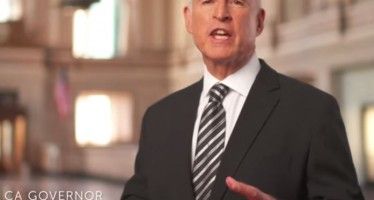Is CA really barreling down recovery road?
By Wayne Lusvardi
Former New York Times journalist Froma Harrop wrote on Real Clear Politics that it’s “tough times for California bashers” because of the recent turnaround of the state.
Harrop argued that those who have bashed California — she sites Steven Greenhut in Reason magazine, George Will of ABC News and Charlotte Allen of the Weekly Standard — are at a loss to explain California’s recent successes:
* A newly balanced budget;
* Public investments in job producing renewable energy;
* An unemployment rate headed downward;
* Replenished funds for public schools;
* New jobs from the state’s cap-and-trade law;
* A bullet train for an “advanced civilization”;
* An upgraded credit rating from Standard and Poor’s.
It’s true that Brown’s budget projects a relatively tiny 0.6 percent budget surplus for 2013, $0.85 billion. But the Los Angeles Times reported that California has an unaddressed $1.9 billion structural budget deficit. And the $6.8 billion in new tax revenues from Proposition 30 won’t even offset the projected $7.6 billion in estimated losses to California of federal revenues from the U.S. fiscal cliff.
Water and power are regional, not local
Harrop claims that the reason the surrounding states have such cheaper energy prices is that Northwest electricity mainly comes from hydropower.
Actually, the water pumped to California through the Colorado River Aqueduct comes from cheap hydropower at a cost of 2 cents per kilowatt-hour from the Hoover Dam and Parker Dam power plants. The U.S. Bureau of Reclamation runs Parker Dam, but the power plant was built and paid for by the Metropolitan Water District of Southern California. Imported hydropower, mainly from the Pacific Northwest, amounted to about 30 percent of California’s total hydroelectric power in 2007.
It’s true that California’s unemployment rate has declined from a high of 12.4 percent in 2010 to 9.8 percent at the end of 2012. This is still double the 5.3 percent unemployment rate in 2007. And it’s much higher than the 7.9 percent U.S. unemployment rate.
California is slowly recovering from the Mortgage Meltdown and Bank Crisis of 2008. Its recent success, however, hasn’t come from the public sector. Most of California’s success has been in the private sector with the rebound of Silicon Valley’s economy, increased exports and tourism, a belated increase in oil and gas fracking due to bureaucratic permitting, and a release from environmental lawsuits by the courts for Delta water for Central Valley farming.
Train stop
Harrop’s enthusiasm for the California High-Speed Rail Authority also is misplaced. The only funding available is $9.8 billion in state funds from Proposition 1A in 2008; and $3.5 billion in federal funds. Not just the Republican-controlled U.S. House of Representatives, but the Democratic-controlled U.S. Senate voted to cut off funds for the CHSRA. So no more federal funds likely are to be sent to a project the rest of the country considers a boondoggle. And the federal government, of course, has troubles of its own with its endemic $1 trillion-plus annual budgets.
Even many liberals have critiqued the project. The L.A. Weekly wrote:
“USC professor and transportation planner Lisa Schweitzer recalls that in 2008, when then-Gov. Arnold Schwarzenegger, then–Assembly Speaker Fabian Nuñez and their appointees on the rail authority board insisted the cost would be just $34 billion, ‘the coffee shot out of our noses’ at USC.
“Schweitzer’s graduate class at USC’s School of Policy, Planning and Development later completed an independent estimate, coming up with a figure of $90 billion to $105 billion, which closely aligns with the figure the authority released Nov. 1.”
The current estimated cost for a train the Economist magazine said would be “cheaper, slower” is $68 billion. “Slower,” of course, means the train won’t be “high-speed,” which was the sales pitch given to voters who barely approved the project in 2008.
Will the recovery continue?
The big question now is whether or not the economic recovery continues under the cloud of higher taxes from Proposition 30 and Proposition 39; as well as higher federal taxes enacted last month and the new Obamacare taxes that took effect this year.
By the time Brown’s May Revision to his budget comes out in three months, the praise Harrop and others are making about California’s recovery may have vanished like a February mist.
Related Articles
England vs. Maldonado
John Seiler: Conservative activist Karen England is running a write-in campaign against Abel “Arnold’s Chauffeur” Maldonado for the Lt. Gov.’s
Brown steers clear of Dems as election nears
State Democrats haven’t had much luck in securing the biggest show of support in California — Gov. Jerry Brown. As
Californians give Dems PIN numbers
Nov. 16, 2012 By Steven Greenhut SACRAMENTO — After the election results came in, I started searching for two things:




